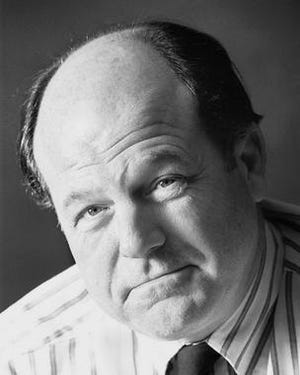Pioneer residents brought customs with them when settling in Columbus
One problem of trying to understand what life was like in Columbus and central Ohio more than 200 years ago when the town was founded is in understanding who these people were and how they lived.
They did not live like us. Life in Columbus after its founding in 1812 was difficult to say the least. Frontier Franklinton across the Scioto River had been founded in 1797, and its several hundred residents offered support and assistance to the new state capital.

That help often was needed. The threat of attack by the British and their Native American allies did not diminish until after the War of 1812 in 1816. And after that the persistent dangers of life at the edge of a moving frontier with challenges from rattlesnakes to an occasional angry bear were always present.
All these challenges notwithstanding, the pioneer residents of central Ohio brought with them the customs of their earlier lives and continued to observe them in their new homes. A few examples from earlier histories of the area might help us see them a bit more clearly.

“The pioneer women had abundant opportunity and no end of incentive to practice the poetical philosophy that ‘beauty unadorned’s adorned the most.’ Their usual garments were made of linsey-woolsey, or a homemade mixture of linen and cotton, and were fabricated with little regard for ornament. Yet the ingenuity of the sex seldom failed to find some resource for personal embellishment. A typical belle of the wilderness had been thus described: ‘A smiling face, fresh but dark, a full head of smoothly combed hair tied up behind in a twist knot; a dress, made of seven yards of linsey-woolsey, closely fits the natural form and reaches to within six inches of the floor. It is fancifully and uniquely striped with copperas, butternut and indigo, alternating. The belt is made of homespun, but is colored with imported dye, and a row of buttons down the back is also set on a bright stripe. Heavy cowhide shoes conceal substantial feet and shapely ankles.’”
As It Were:Hannah Neil worked selflessly to help Columbus’ poor in 1800s
As It Were:Harvesting chunks of frozen rivers put Columbus on path to ice production
The lady of frontier central Ohio met her beau in due course, and a wedding celebration followed.
In 1876, Henry Noble of Columbus described one. “A wedding engaged, then as now, the attention of the whole neighborhood, and the frolic was anticipated by old and young with eager anticipation. In the morning, the groom and his attendants started for his father’s house to reach the bride’s before noon, for the wedding, by the inexorable law of fashion, must take place before dinner. …The horses, for all come on horseback, were caparisoned with old saddles, old bridles or halters, packsaddles with a blanket over them and a rope or a string for a girth or reins as often as leather. They formed a procession as well as they could along the narrow roads. Sometimes an ambuscade of mischievous young men was formed, who fired off their guns and frightened the horses, and caused the girls to shriek.”
“The race for the bottle took place by two or more of the young men racing over this rough road to the bride’s house, the victor to receive a bottle of whisky, which he bore back in triumph, and passed along the procession for each one to take a drink in turn. Then came the arrival at the bride’s house, the ceremony, the dinner, and the dance, all conducted with the greatest fun and frolic till morning. Sometimes those who were not invited would revenge themselves by cutting off the manes, foretops and tails of the horses of the wedding party.
“The log-rolling, harvesting and husking bees for the men and the quilting and apple butter making for the women, furnished frequent occasions for social intercourse, and gave ample opportunities for the different neighborhoods to know the good and bad qualities of each other.”
An apple butter frolic later was described in some detail.
“The middle-aged and young of a whole neighborhood assembled at some spacious farmhouse to peel and pare great heaps of apples for drying or making into ‘butter’ by stewing in boiled cider.
“The love fortunes of men and maids by the counting of apple seeds; and whoever removed the entire skin of a pippin in one long ribbon, whirled the lucky streamer thrice around his head and let it fall behind him on the floor, and in the form it took, a quick fancy read the monogram of his or her intended mate.”
“After the apples were cut, and the cider boiled, the floor was cleared for a frolic, technically so called, and merry were the dancers and loud the songs with which our fathers and mothers regaled the flying hours. The fiddler was a man of importance, and when, after midnight, he called the ‘Virginia Reel’ such shouting, such laughter, such clatter of hilarious feet upon the sanded puncheon floor, started the screech owl out of doors, and waked the babe from its sweet slumber in the sugar trough.”
Apparently, a good time was had by all.
Local historian and author Ed Lentz writes the As It Were column for ThisWeek Community News and The Columbus Dispatch.
Read More: Pioneer residents brought customs with them when settling in Columbus

